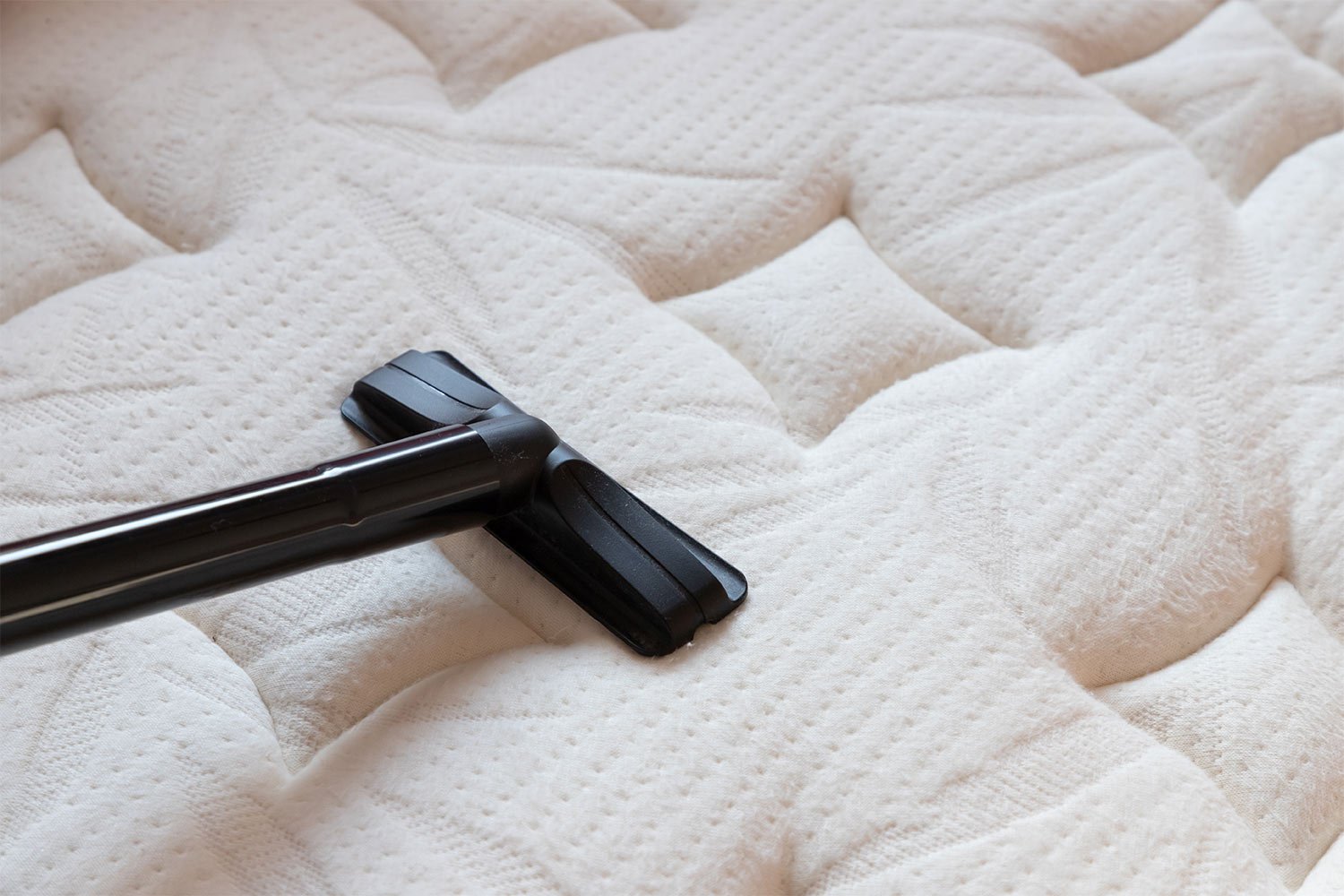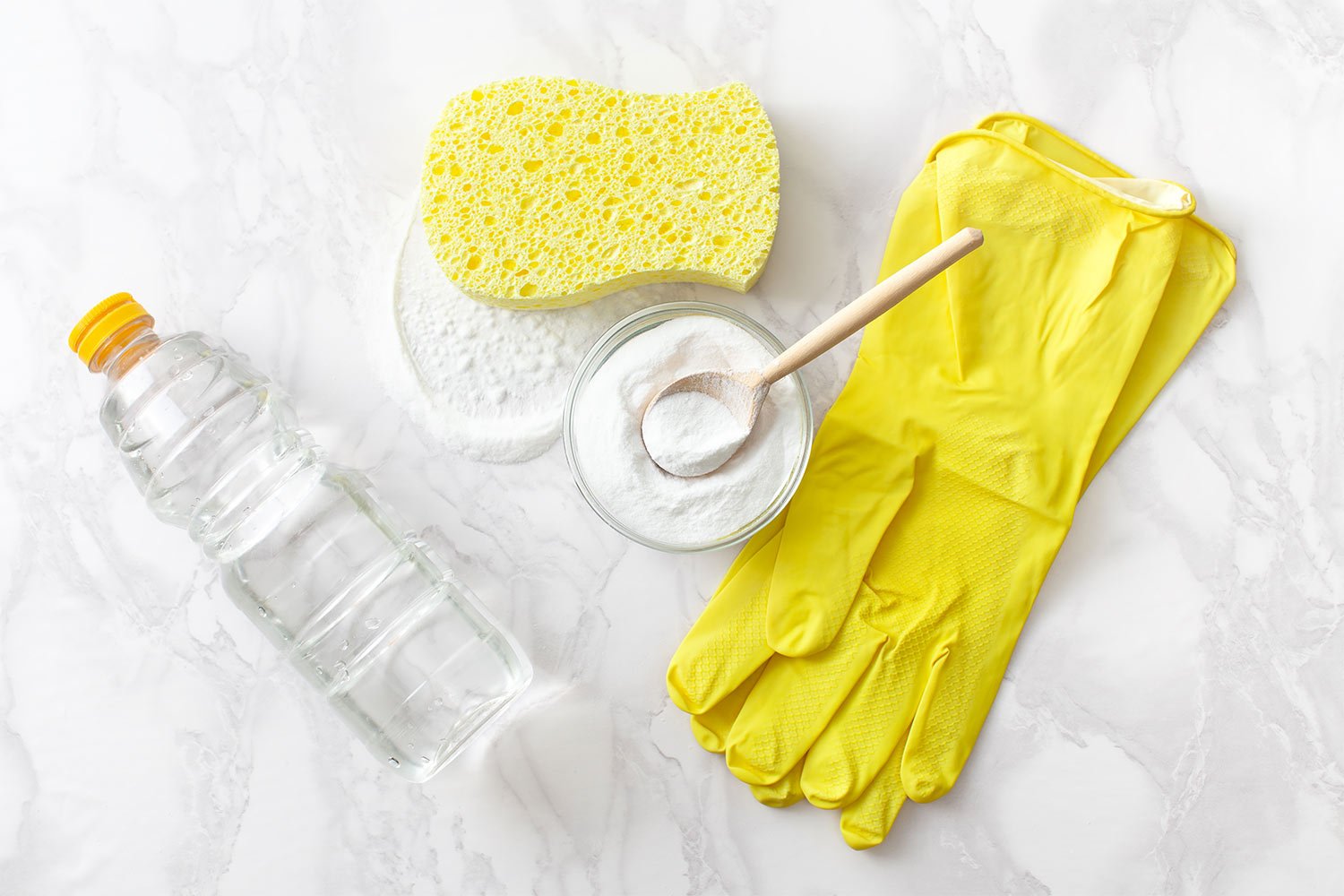How to Clean a Mattress in 8 Steps
A clean mattress is key to a good night’s sleep


- Vacuum cleaner with upholstery attachment
- Fan
- Hydrogen peroxide
- Enzyme cleaner
- Baking soda
- Dish soap
- Paper towels or rags
Your mattress is a key part of making sure you get a good night’s sleep, but a dirty mattress can trap allergens, smells, and stains that could keep you up at night. Mattress cleaning can remove dust mites, dirt, sweat, and stains to help you sleep better and prolong the life of your mattress. We’ll teach you how to clean a mattress and how to treat stains with the proper methods and supplies so you can sleep more soundly.
Some over-the-counter or DIY stain removers can make stains worse. If you are unsure of the material and the stain is over a week old, a professional cleaner will know the correct solution to use.
Remove and Launder Bed Linens
Your first step is to strip the bed and wash all of your bedding. Be sure to remove and launder your mattress protector as well to ensure that everything that goes back on your newly cleaned mattress is clean and fresh. If your pillows are made of down, feathers, or polyfill, this is a good time to wash those as well. Remember that some pillows can’t be washed in the washing machine; follow the manufacturer’s instructions to clean memory foam or solid foam pillows instead.
Vacuum the Mattress
 Photo: Ratchat / iStock / Getty Images Plus / Getty Images
Photo: Ratchat / iStock / Getty Images Plus / Getty ImagesOnce you’ve removed the bedding, attach the upholstery attachment to your vacuum cleaner and vacuum the mattress. Don’t forget about the sides of the mattress as well as in the creases of the seams. Vacuuming will remove dust mites, dirt, and other debris that has collected in the mattress.
Deodorize With Baking Soda
Next, sprinkle a thin layer of baking soda over the surface of the mattress. Cleaning with baking soda helps to absorb odors and freshen up a musty mattress. Let the baking soda sit for about 30 minutes so it can effectively absorb odors.
Vacuum Again
After the baking soda has had a chance to work, go ahead and vacuum the mattress again to remove it. Repeat if necessary to ensure you’ve gotten all of the baking soda off of the mattress.
Spot Treat Stains
 Photo: EKramar/ iStock / Getty Images Plus / Getty Images
Photo: EKramar/ iStock / Getty Images Plus / Getty ImagesMattresses tend to accumulate stains that can be broken down into two categories: biological stains (like urine, blood, and sweat) and general stains (like dirt and oil).
Treat biological stains by dabbing hydrogen peroxide or an enzyme cleaner into the stain using a paper towel or rag.
Treat general stains with a mix of a few drops of dish soap in warm water.
Press the cleaner into the stain until it lifts, taking care not to over saturate the mattress. For more stubborn stains, gently work the cleaner in with a soft-bristled brush. Once the stain has lifted, blot any excess moisture with a clean rag or paper towel.
Allow Mattress to Air Dry
Remaking the bed while the mattress still has damp spots can result in mildew or mold growth. Be sure to let the mattress fully dry; you can check by pressing a clean paper towel into any of the spots you’ve treated and making sure the towel stays dry. You can always speed up the process by using a fan directed at the bed.
Rotate the Mattress
Many mattresses should be rotated two to four times a year. Now is a great time to rotate it head-to-foot in order to prevent sagging and worn spots. Note that not all mattresses need to be rotated, and many should not be flipped, so always consult your manufacturer’s instructions to be sure.
Remake the Bed
Now that you have a fresh, clean mattress, remake the bed with your clean bedding and enjoy a good night’s sleep free of allergens and musty odors!
Tips For Keeping Your Mattress Clean Between Cleanings
By regularly cleaning and taking care of your mattress, you may be able to extend its lifetime to 10 years. Make sure to maintain your mattress in order to maximize your investment and ensure you protect your mattress in between cleanings.
Use a mattress protector: Keep your mattress “like new” longer with a mattress protector. This material will add an extra layer of protection and prevent spots and stains from making contact with your actual, expensive mattress. Mattress protectors start around $20 for a queen-sized bed.
Change sheets regularly: To keep your mattress and bedroom clean, the Sleep Foundation says to wash your sheets at least once a week.
Keep mattress dry: A wet mattress breeds mold and mildew. If you or your partner sweat at night, take extra steps to dry out your mattress in the morning. Delay making the bed until you can let everything air dry.
How Much Does Professional Mattress Cleaning Cost?
On average, professional mattress cleaning will run you between $80 ans $200, with an average price of $130. The size of your mattress can affect the price, with smaller mattresses like cribs and twin mattresses costing the least and king mattresses the most. If you need to clean multiple mattresses in your household, most cleaning services will offer you up to a 25% discount on additional mattresses beyond the first.
DIY vs. Hiring a Pro to Clean a Mattress
DIY mattress cleaning is much more affordable, especially since you likely have all the products you need in your home already. But, sometimes, a mattress stain is beyond even your best efforts. If that’s the case, or if you’d simply rather leave the job to the experts, hire a local mattress cleaning service to take care of it.
Frequently Asked Questions
You should clean your mattress at least twice a year. Allergy sufferers, those with pets, or those who sweat a lot while sleeping may want to consider more frequent mattress cleaning. Using and regularly laundering a mattress protector will help a lot, but dirt, sweat, and dust mites can still make their way into your mattress even with a protector.
You can clean some mattresses with a carpet cleaner that has an upholstery attachment. Mattresses made out of memory foam or other foam generally should not be cleaned with a carpet cleaner, although many traditional spring mattresses can be cleaned this way. Consult the manufacturer’s instructions to be sure. If you do use a carpet cleaner, be aware that it will take much longer to fully dry and be careful not to oversaturate the mattress.
You should not use bleach to clean a mattress. Bleach is too harsh for most mattress fibers and can cause damage to mattress foam. In addition, bleach cannot be adequately rinsed out of a mattress, causing the smell to linger for a long time. Choose gentler cleaners like baking soda, dish soap, or enzyme cleaners.
Yes. Steam cleaning is one of the most effective ways to clean a mattress because the heat from the steam can kill dust mites and bed bugs. Using steam that is at least 212 degrees F can also disinfect the material.





- House Cleaning Services
- Housekeeping Services
- Tile Grout Cleaners
- Move Out Cleaners
- Deck Cleaning Services
- Same Day House Cleaning
- Ultrasonic Cleaning
- Apartment Cleaners
- Vinyl Siding Cleaning
- Mattress Cleaners
- Kitchen Hood Cleaning
- Emergency Cleaning Services
- Housekeeper Agencies
- Residential Cleaners
- Cleaning Crews
- Couch Cleaning
- Garage Cleaning Services
- Odor Removal Services
- Commercial Cleaning Services











